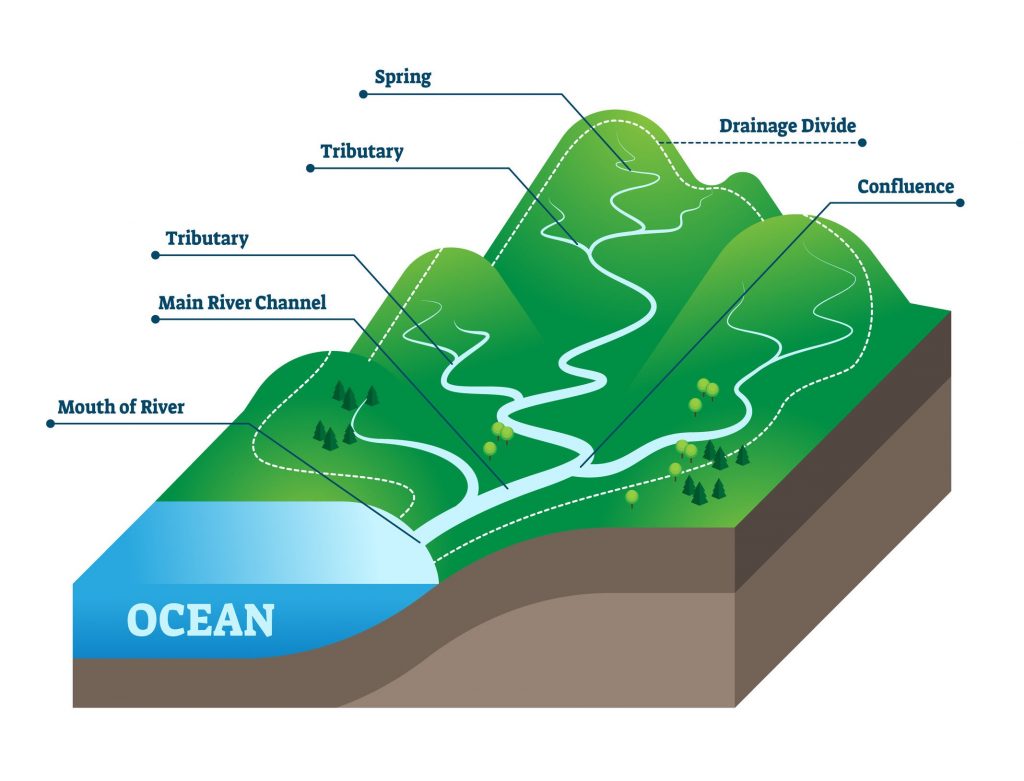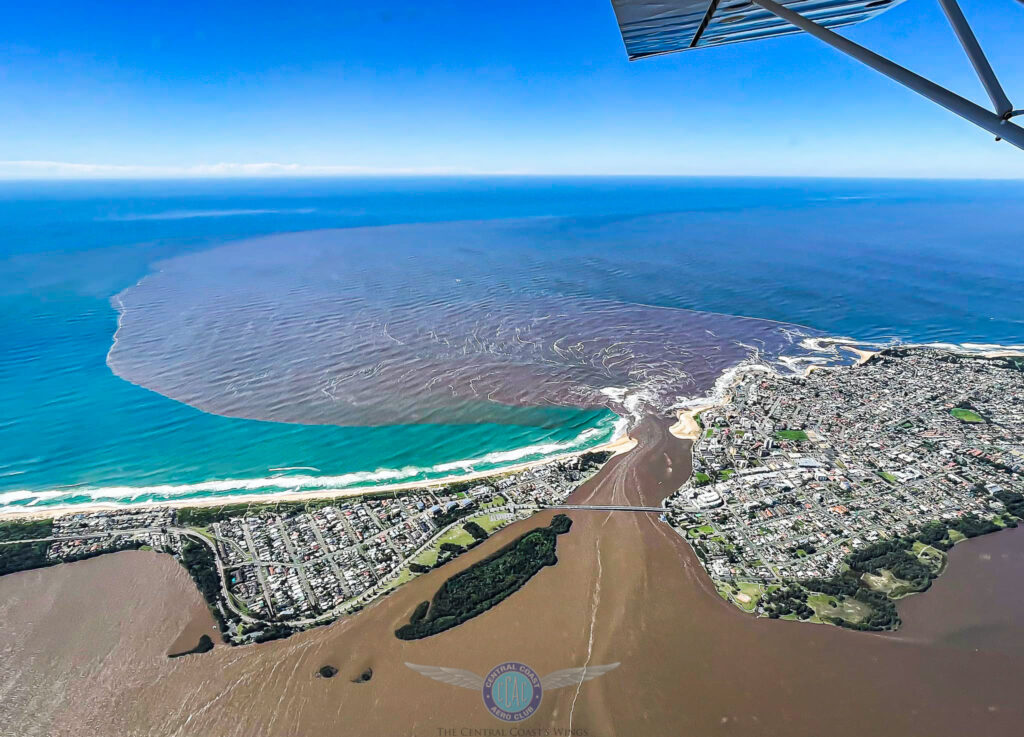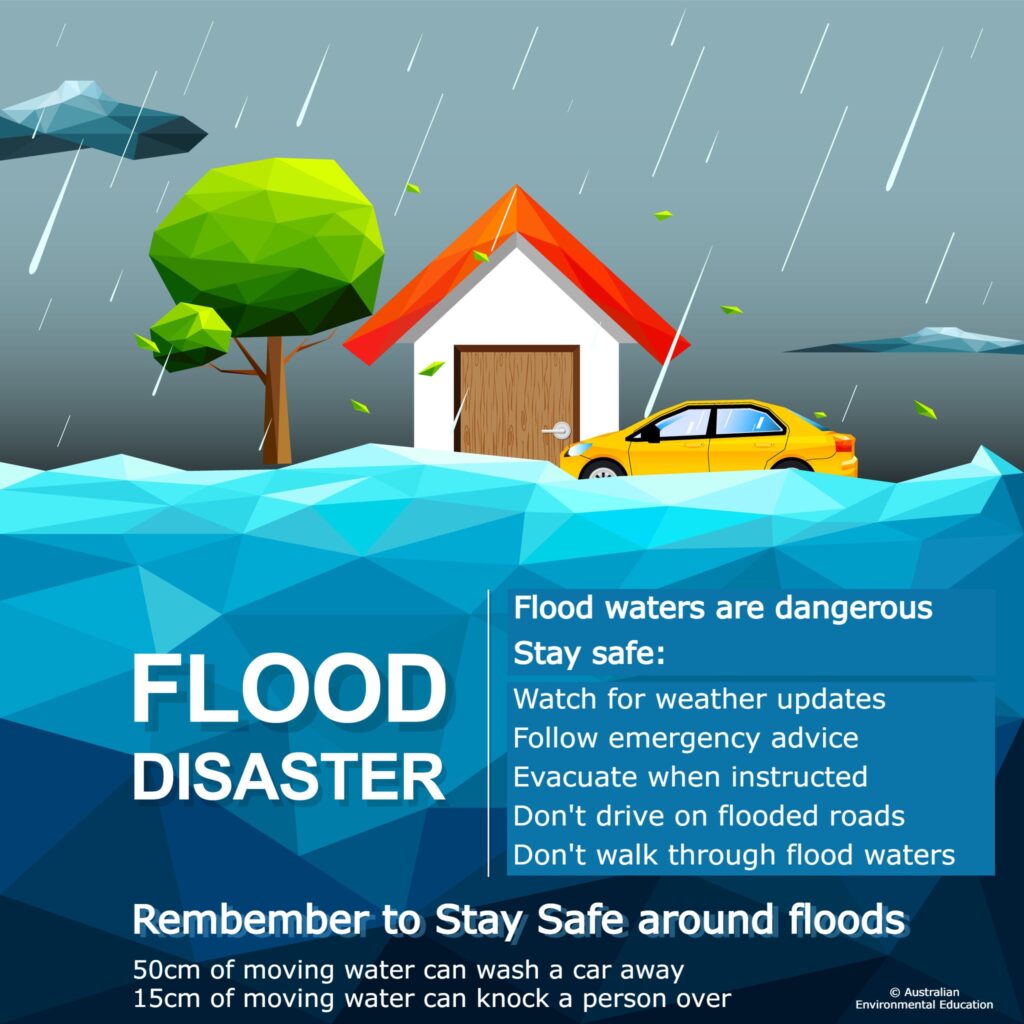Australia is often perceived as a sunburnt country of sweeping plains and rugged mountains, surrounded by beautiful oceans. Australia is also highly susceptible to flooding which poses a significant threat to lives, property, and the environment.

Floods are the most frequent type of natural disaster and occurs when water extends over an area which is usually dry land. Globally floods are often caused by heavy rainfall, rapid snowmelt or a storm surge from a tropical cyclone or tsunami in coastal areas. The inundation of a normally dry area caused by rising water in an existing waterway or ponding of water at the point where the rain fell. Flash flooding is a quick event can can occur with little or no warning whereas flooding is a longer term event and may last days or weeks.
Typical Catchment
Catchments have water flowing into creeks and rivers and eventually to the sea. Floods in coastal systems are also impacted by the tides. A flood peak coinciding with the high tide will have greater impacts on low lying areas.

Flooding in Australia is primarily driven by several key factors:
- Heavy Rainfall and Storms: Australia experiences intense rainfall, particularly in tropical and subtropical regions. Weather patterns such as the La Niña phenomenon can bring above-average rainfall, increasing the risk of floods.
- Cyclones and Tropical Storms: Northern Australia is prone to cyclones, which bring torrential rains and can lead to widespread flooding. These cyclones can affect coastal and inland areas alike.
- River Overflow: Major river systems, such as the Hawkesbury-Nepean and Murray-Darling Basin, can overflow due to excessive rain, leading to significant flooding in agricultural and residential areas.
- Urbanization: Increasing urban development reduces natural drainage areas, causing water to accumulate rapidly in urban settings, leading to flash floods.
- Topography and Soil Saturation: Australia’s diverse topography, ranging from flat plains to mountainous regions, affects how water accumulates and flows. Saturated soils from previous rains can exacerbate flooding as additional rainwater has nowhere to go.
Why floods are so deep and dangerous in the Hawkesbury-Nepean Valley. Learn how the ‘bathtub effect’ makes this valley have one of the greatest flood risks in Australia.
The extent and depth of flooding is influenced by the unique ‘Bathtub Effect’ of the floodplain causing floodwater to back-up. The ‘Bathtub Effect’ enables dangerous, damaging flooding of significant depth to occur.
Most river valleys tend to widen as they approach the sea. The opposite is the case in the Hawkesbury-Nepean Valley. The river narrow downstream at sandstone gorges between Sackville and Brooklyn create natural choke points. Floodwaters back up and rise rapidly, causing deep and widespread flooding across the floodplain. Much like a bathtub with five taps turned on, but only one plug hole to let the water out.
Historical Flood Events
Australia has experienced numerous significant flood events, each leaving a profound impact on communities and the landscape:
- The 2022 Lismore Flood: The biggest flood on record in Lismore, NSW, occurred on 2022, with flood levels reaching 14.4 meters. It broke records by a considerable margin and caused widespread destruction and damage. The 2022 flood led to numerous deaths, widespread destruction, and billions of dollars in damage
- The 2019-2020 East Coast Floods: Amidst the Black Summer bushfires, torrential rains led to floods along the east coast, providing relief from fires but also causing significant water damage.
- The 2010-2011 Queensland Floods: Triggered by a strong La Niña, these floods affected over 200,000 people, resulted in 33 deaths, and caused an estimated $2.38 billion in damages. Towns like Brisbane and Ipswich were severely impacted, highlighting the vulnerability of even major cities.
- The 1974 Brisbane Flood: Resulting from Cyclone Wanda, this flood saw the Brisbane River break its banks, affecting over 13,000 homes and leading to widespread disruption.

Impacts of Flooding
The impacts of flooding in Australia effect the local environment, infrastructure and entire communities:
- Human and Animal Lives: Floods can cause loss of life and displacement of communities. They also endanger wildlife, leading to long-term ecological impacts.
- Economic Costs: The economic toll of floods is staggering. Damage to infrastructure, homes, and businesses can run into billions of dollars. The agricultural sector often suffers as crops are destroyed and livestock lost.
- Environmental Damage: Floods can lead to soil erosion, water contamination, and destruction of natural habitats. Recovery can take years, with long-lasting effects on biodiversity.
- Health Risks: Stagnant floodwaters can become breeding grounds for diseases, posing significant public health risks. Access to clean water and sanitation can become major issues during and after floods.

Flood Management and Mitigation
Australia has made considerable strides in flood management and mitigation to reduce the impact of future floods:
- Infrastructure: Building levees, dams, and floodways to control and divert water flow is critical. The Wivenhoe Dam, for instance, helps protect Brisbane from severe flooding.
- Urban Planning: Incorporating flood-resistant designs in urban development and restricting construction in flood-prone areas are essential strategies.
- Early Warning Systems: Advanced weather prediction technologies and early warning systems enable authorities to issue timely alerts, allowing people to evacuate and prepare.
- Community Education: Public awareness campaigns on flood risks and safety measures can empower communities to act swiftly and effectively during flood events.
- Insurance and Financial Support: Insurance schemes and government financial aid play a vital role in helping individuals and businesses recover post-flood.
Flooding in Australia is a complex and persistent natural disaster that requires ongoing attention and proactive management. As climate change continues to alter weather patterns, the frequency and severity of floods may increase, making it more important than ever to invest in resilient infrastructure, effective planning, and community preparedness. By understanding the causes, impacts, and strategies for mitigation, Australians can better navigate the challenges posed by flooding and work towards minimizing its devastating effects.

